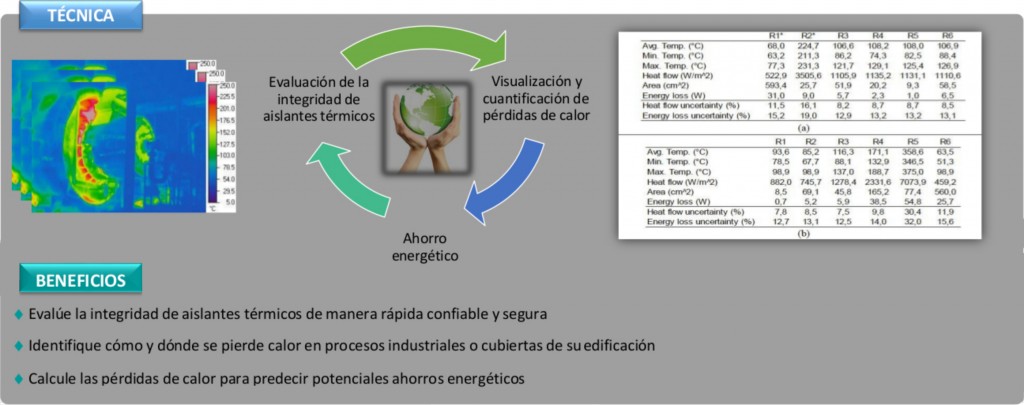 METHOD TO VISUALIZE ENERGY LOSSES IN INDUSTRIAL ENVIRONMENTS
METHOD TO VISUALIZE ENERGY LOSSES IN INDUSTRIAL ENVIRONMENTS
Energy losses mainly occur in building covers and heat industrial insulators. At this moment the energy audits assess these losses and propose actions to correct it. These evaluations use infrared thermography to search for temperature gradients and identify spots of heat losses. These energy audits are expensive and slow.
ANTER SAS ANTERS SAS proposes a different way of carrying out these audits through the design and implementation of an acquisition and analysis system that generates a thermal and heat losses map. The main benefit of this project12 for our clients is the ability of generating information about where and how energy is lost in buildings and industrial installations that permits to increase energy efficiency.

 Parametrization of photovoltaic systems using techniques of evolutive computation
Parametrization of photovoltaic systems using techniques of evolutive computation
Renewable energy sources are clean and economic given the technical advances and the increase of solar cells efficiency. A photovoltaic system converts solar energy into electricity. The basic device is a photovoltaic cell. The cells are integrated into to create panels or modules of PV systems.
ANTER SAS proposes the selection of a physical model that based on the monitoring of PV modules and the manufacturer’s data curves identifies electrical parameters (resistances and quality factors) of the installed PV cells by using evolutive computation that uses optimization strategies such as Genetic algorithms (GA) and particle swarm optimization (PSO).
![]()
 IMAGES PROCESSING AND FLOW MEASUREMENT APPLIED TO THE THERMOGRAPHIC ANALYSIS OF HEAT-LOSSES IN BOILERS’ ISOLATION
IMAGES PROCESSING AND FLOW MEASUREMENT APPLIED TO THE THERMOGRAPHIC ANALYSIS OF HEAT-LOSSES IN BOILERS’ ISOLATION
This research suggests a methodology to calculate the thermic flow through waterwall-boiler´s home isolated walls, using thermic images. The procedure is based on the provided information by a thermogram and is helped with: the thermogram’s range, knowing the camera’s FOV, surface’s emmisivity and characteristic length, object-to-camera distance, environmental temperature, and the calibration curve that relates grey-levels with temperatures.
A software tool to upload and process the information mentioned above was developed. This tool uses a steady-stable unidimentional model of heat transfer to figure the thermic flow; and to calculate the surface’s average natural convection coefficient hc uses heuristic correlations developed for common geometries.
To test the technique functioning, the information given by the software tool was compared to the data given by the heat flow meter. In laboratory tests this comparison showed a 6% error range of relative error.
The final validation was made on a waterwall-boiler´s home isolated walls and the highest error obtained was close to 15%. Regardless the calibration curve was found under laboratory conditions and the empiric correlations to calculate hc are for isometric surfaces, the methodology presented a good performance.
This then is a first step to quantify the global heat losses on waterwall-boiler´s home isolated walls.
Keywords: Infrared Thermography, Boiler, Heat Transfer, Thermal flow measurement, Surface Temperature Mapping.



